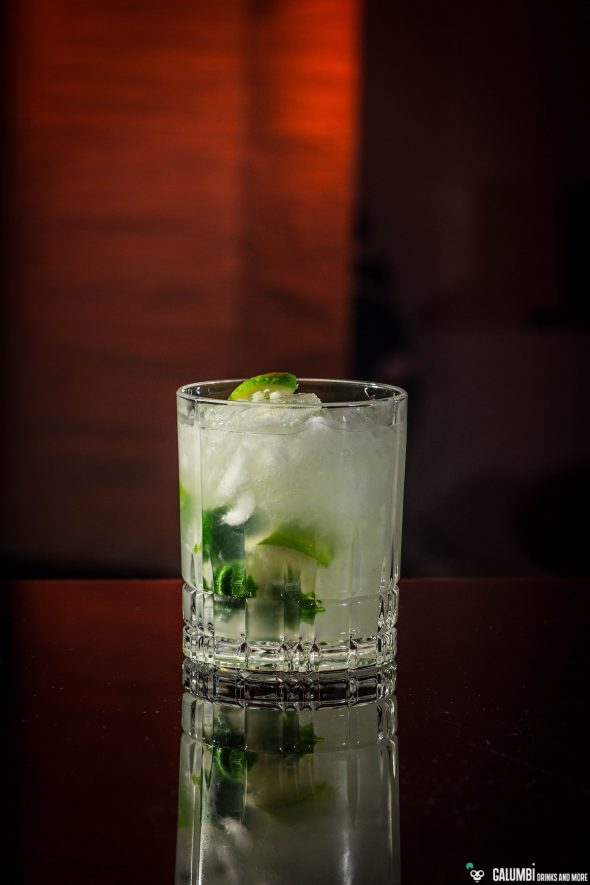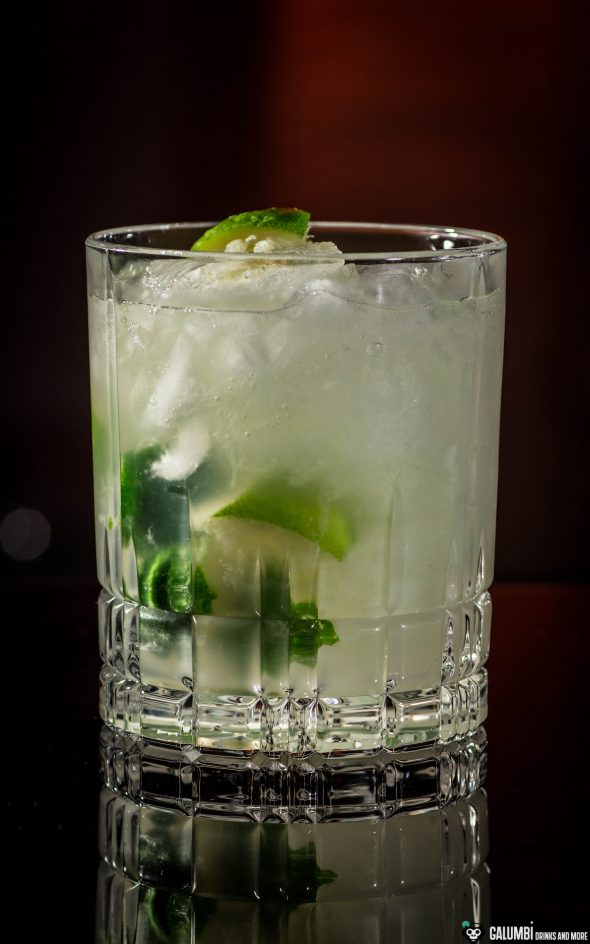
On the one hand I thought that today’s cocktail is still missing in my blog. On the other hand I was not sure if I really should write about it here because basically everyone knows that drink and in addition to that it is that hackneyed that it certainly won’t knock anyone’s socks off. Also I’m actually almost never in the mood to prepare one for myself. But now there is a reason to write about it anyway. Of course I’m talking about the good old Caipirinha.
But why does it makes “sense” now? Simply because Olympia is omnipresent these days and therefore Brazilian lifestyle and impressions from throughout the country can be seen on TV every day. But before I start to calumnize the Caipirinha totally, I want to emphasize that in principle a Caipirinha does not have to be bad drink, if it is done properly! But you’ll need more for that than a bottle of Pitú and a little brown sugar.
Basically a Caipirinha is actually a Batida and so it is no wonder that in Brazil it is also widely known and consumed as “Batida de limão”. However, a Batida de limão is often made only with the juice of the lime and no with pieces of it, but that is general rule. Basically both drinks are identical: cachaça, lime, sugar and ice (water); you don’t need anything else. But here it begins to become important. Above all, be sure to choose the right cachaça. Cachaça is a sugar cane distillate, whose most famous representative in Germany or in other European countries, Pitú, offers not necessarily the best possible quality of all the cachaças out there (although there are also different qualities of Pitú, but usually you will find the cheapest one). The importance of a quality cachaça is also reflected in a common but also dubious nickname of the caipirinha cocktail: Caipirinha de Pinga (Pinga means something like cheap booze). A good cachaça for a caipirinha should be of matured quality, so that the idiosyncratic and rustic notes of sugarcane come through; that is what essentially singles out a good Cachaça – and of course also the caipirinha. And because you won’t see matured cachaça in 95% of the caipirinhas in Germany and other parts of Europe, many people add brown sugar to add at least a little bit of sugar cane flavor to the drink. However the taste is not very sophisticated and also less authentic. Yes, you have read correctly, brown sugar does not belong in a Caipirinha! Even if you might have the feeling that brown sugar constitutes the generic Caipirinha; that is wrong! If you’re going to visit Brazil and have some caipirinhas there, it’ll convince you of the contrary. So you should always opt for white refined sugar or, if you can find it, white cane sugar. It dissolves much better inside of a liquid and it does wonderfully harmonize with the flavor of matured cachaças.

Caipirinha roughly means something like “little hillbilly”, which is historically somewhat misleading because the cocktail was originally a drink of the upper classes. But during the 20th century it began to spread across the country and then across the world. Due to the citrus base of a Batida de limão there is no addition of condensed milk, which you’ll probably encounter in other Batidas. If you’re interested in other Batida recipes, you might want to have a look on my articles about the Batida de Maracuja or the Jinzu Rambutan Batida.

Recipe:
6 cl (preferably matured) Cachaça
1 lime
3-4 bar spoons of white refined sugar or white cane sugar
Preparation: Cut lime into small pieces and muddle alongside with the sugar in a shaker using your muddler. Add cachaça and fill the shaker with ice cubes and give it a vigorous shake. Then fill the entire content into your pre-chilled glass without straining it.
Glass: Tumbler
Garnish: none
Buying sources: Matured cachaça can be found in specialized stores or online.

Pingback: Caipirissima de Uva | Galumbi
Pingback: Burgen Gin & "Smooth & Green" - Galumbi
Batida de limão and caipirinha are two different things. A caipirinha uses the whole lime. A batida uses only the lemon juice.
Thanks for your comment.
I’ve learned (and also drank) it otherwise, but there may be a slight difference in a way. Do you have any sources for this rather very pedantic difference? Besides that: I guess you mean lime juice, don’t you?
Pingback: Cachaça Yaguara Branca & Caipirinha Highball - Galumbi